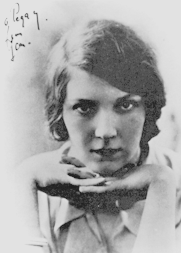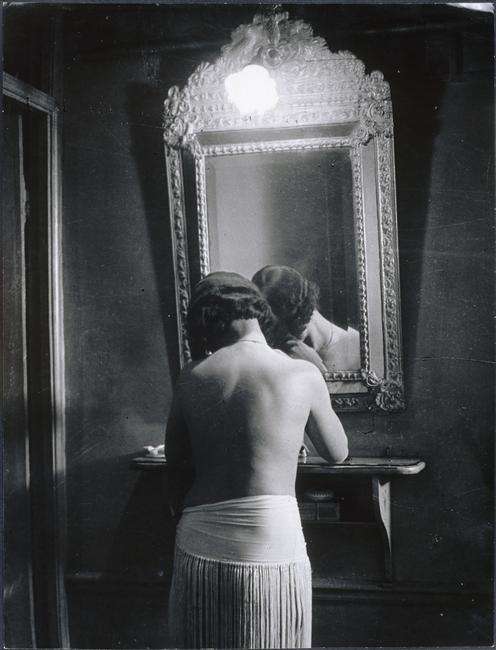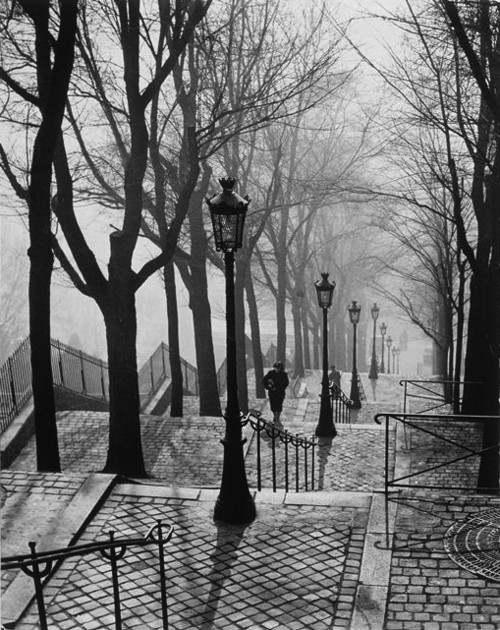 |
| Hugh Laurie and Stephen Fry as Bertie and Jeeves
By P.G. Wodehouse, New York, Avenel Books, 1983
Reading the novels of P.G. Wodehouse is a singular experience. I've been a fan since the 1980s, and its like entering an Anglophilic dreamscape. Jeeves is the perfect "Gentleman's Gentleman," and Bertie is the most charming dimwit in all of literature. I can't really tell the Bertie and Jeeves novels apart. The plots are so trivial and formulaic, yet the prose is undeniably enjoyable. I am so taken with PGW that I've even read his golf short stories. That's devotion!
|
A diary devoted to reading the 100 novels cited in Jane Smiley's 13 Ways of Looking at the Novel
Thursday, September 26, 2013
The Return of Jeeves
Wednesday, September 25, 2013
This is How You Lose Her
 |
| Mr. Diaz mugging for the camera in a wooly hat!
By Junot Diaz, New York, Riverhead Books, 2012
More finely crafted short stories by the very skilled Junot Diaz. He's complained in interviews that he is a very slow writer. Each story is like a finely crafted jewel. I wish he was from LA. I'd enjoy his perspective on West Coast life. The quintessential American is an immigrant, so his tales feel both utterly familiar and utterly alien.
|
The Brief Wondrous Life of Oscar Wao
 |
| Junot Diaz with his novel
By Junot Diaz, New York, Riverhead Books, 2007
Oscar is fat, smart, loves science fiction, and is part of a truly crazy Dominican family. There's a lot to love in Diaz's storytelling. He writes in a literate and funny version of Spanglish. I often don't understand the Spanish words he using in the novel. That's OK with me. I grew up in LA where I didn't understand 95% of the Spanish spoken around me. There are footnotes about DR history and political culture that are quite interesting. There's pain and suffering in the story, but its off-set by elements of magical realism and a warm, wry narrative voice. |
Friday, September 20, 2013
Drown
 |
| The first immigrant to NYC was Juan Rodriguez, from the Dominican Republic. The Dutch Came Later! |
By Junot Diaz, New York, Riverhead Books, 1996
A collection of early stories by Diaz that focus on the immigrant experience of moving from DR to the East Coast. They are surprisingly gritty and disturbing.
The Blue Hour: A life of Jean Rhys
 |
| Jean Rhys, ca. 1920
By Lilian Pizzichini, New York, WW Norton & Co., 2009
Jean Rhys was a difficult person who lived a hard life and possessed a rare literary talent. The strength of this biography is that Pizzichini wants to tell the tale of Rhys's life as she experienced it. Rather than labeling Rhys as having a "borderline personality disorder," Pizzichini creates an empathetic portrait of the author. Rhys wrote Wide Sargasso Sea while in her 70s and often consuming a bottle of whiskey per day. |
Sunday, September 15, 2013
Wide Sargasso Sea
 |
| Brassai, Cathedral, ca. 1930
By Jean Rhys, New York, WW Norton & Co., 1985
After a break from writing for over twenty years, Rhys wrote Wide Sargasso Sea in the 1960s, and it reads like a delirious nightmare. The sensibility is the same--this is clearly a Jean Rhys work--and she reimagines Jane Eyre from the perspective of Grace Pool. Pow! It is like a brilliant hallucination. Her concern for those passed over as marginal, crazy, or foreign is fully evident here. This is post-colonial literature in the best tradition of "the empire strikes back." (Although, the heroine is a white Creole. This isn't The Beloved.) The novel bursts forth with the fully realized power of a distinctly alternative view point.
|
Good Morning, Midnight
 |
| Brassai, Untitled, ca. 1930
By Jean Rhys, New York, WW Norton & Co., 1985
My favorite of Rhy's early novels. Sasha Jensen is her most articulate heroine. She is in her late 30s or early 40s and looks within herself to understand life's pain. Sasha is sloshed but doesn't indulge in self-pity. This novel is about how tenuous human connections are and the unrelenting grind of poverty. The strength of Rhy's work is that she focuses on the interior landscape of her heroines. The outside events in her novels are fairly uniform, so she turns her attention to the feelings and motivations of her characters. Her characters are Bohemian lounge-abouts, but sensitive and perceptive too.
Good Morning, Midnight! I'm coming home, Day got tired of me-- How could I of him? Sunshine was a sweet place, I'd like to stay-- But Morn didn't want me--now-- So good night, Day! Emily Dickinson |
After Leaving Mr. Mackenzie
 |
| Brassai, Untitled, ca. 1930
By Jean Rhys, New York, WW Norton & Co., 1985
Julia Martin is in her mid-30s and living in Paris when Mr. Mackenzie dumps her. She leaves for her native London where she confronts her sister who has a lived a life of middle-class, though impoverished, conformity. Unable to earn a living--we also learn that she is divorced and her child has died--she asks former lovers for money. Disappointed, she returns to Paris and her life resumes its pattern of drink, hotel rooms, and hurt feelings. Julia is neither a successful member of Bohemia nor a bourgeoisie. She drifts along on the edge of both worlds. All of Rhys's heroines are betrayed, alone, and poor. |
Quartet
 |
| Brassai, Untitled, ca. 1930
By Jean Rhys, New York, WW Norton & Co., 1985
We are in what is clearly Jean Rhys Land: a young woman in the 1930s drinks to excess, lives in a series of hotel rooms, asks for gifts of money from ex-lovers, and suffers a great deal. I don't mean to be flip. There's an undeniable freshness and honesty about Rhys work that is very winning. Marya Zelli marries a Polish thief, he is caught and thrown into jail. She becomes involved in a menage a trois with rich expatriates. Misery all around.
|
Voyage in the Dark
 |
| Brassai, Untitled, ca. 1930
By Jean Rhys, New York, WW Norton & Co., 1985
Anna Morgan is from the West Indies and living in inter-war (or pre-WWI?) London. Her father is dead, the rest of her family apathetic, and working as a chorus girl. Her first affair ends in an abortion. Rhys's style reminds me of Vermeer: the prose is precise, closely observed, and concerned with the things of everyday life. Anna's passivity in the face of psychological disaster is noteworthy. She is vacant, empty, ghost-like as she moves through the world. Her only escape is alcohol when seemingly anything might happen. She drinks until bedtime and then pulls the covers over her head to dream of her childhood.
|
Tuesday, September 10, 2013
The Beloved
 |
| Slave Irons: Collar
By Toni Morrison, New York, Alfred A. Knopf, 1998
This novel is a searing read. I had a stomach ache while reading it, and my eyes frequently welled up with tears. Both the story's content (the personal and collective devastation to African Americans by the institution of slavery) and Morrison's style (a lyrical, fragmentary, and elliptical way of telling her story) are very effective. I especially like how deeply Morrison understands the work of trauma in shaping memory, forgetting, and identity. Trauma can be defined by painful memories that intrude in the course of everyday life. The past is co-present with the Now in a powerful way for trauma victims. It also engenders, paradoxically, the necessity of forgetting. This is the best novel I've ever read about American culture. |
Kristin Lavrandsdatter
 |
| Borgund Stave Church
By Sigrid Undset, trans., Tiina Nunnally, London, Penguin Books, 2005
Undset's romantic prose was, initially, a relief after reading so much Anthony Powell. The novel follows the arch of one woman's life from childhood to her demise in the Black Death. The strength of the novel is the author's deep knowledge of everyday life in 14th century Norway. Her father was an anthropologist and she grew up surrounded by medieval artifacts. I remember learning in college that European culture was the result of three factors: the Nordic/ Germanic tribes, the learning of the ancient world housed in monasteries, and Christianity. These influences are clearly on display in Kristin Lavrandsdatter.
|
Subscribe to:
Posts (Atom)